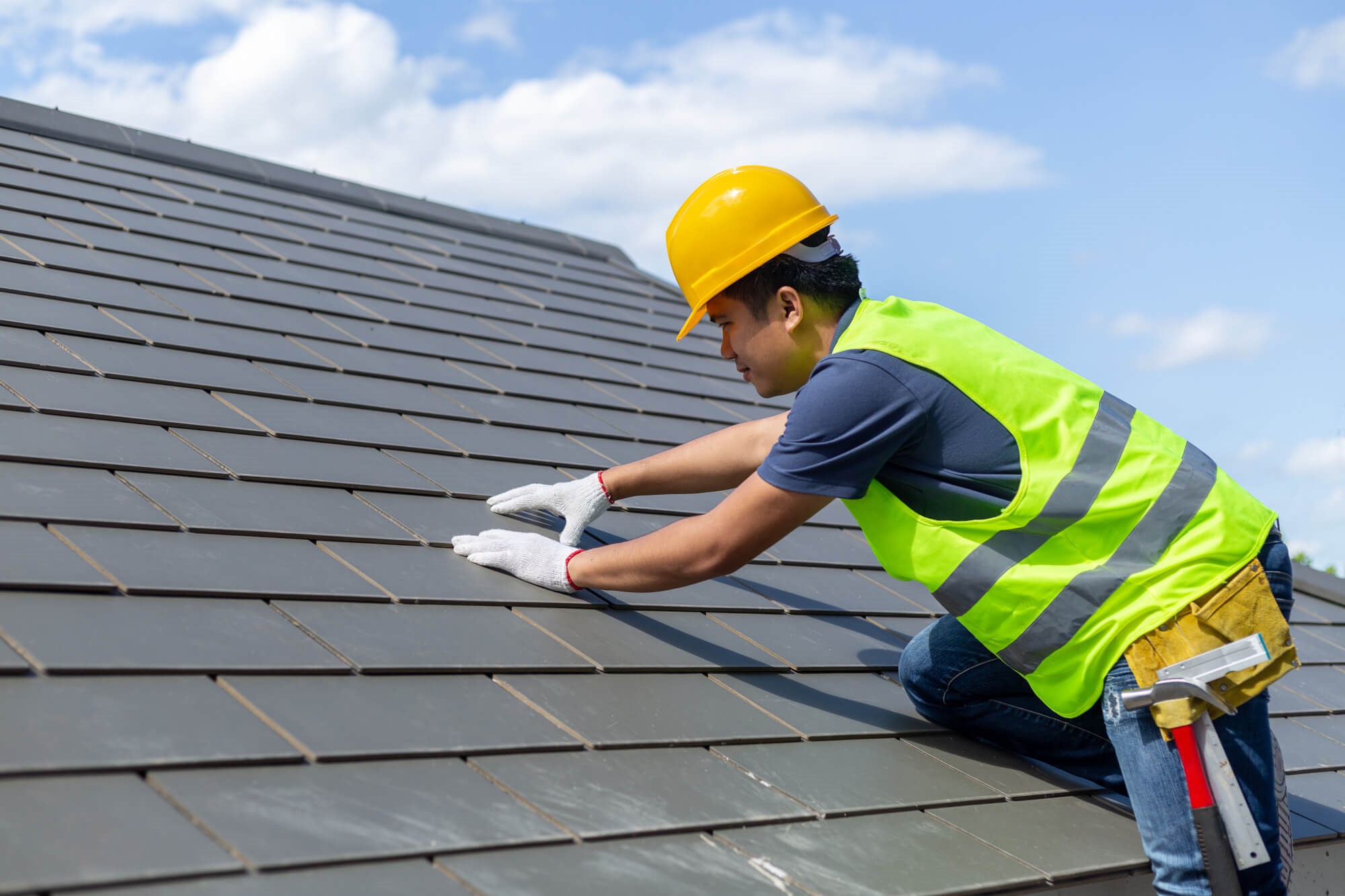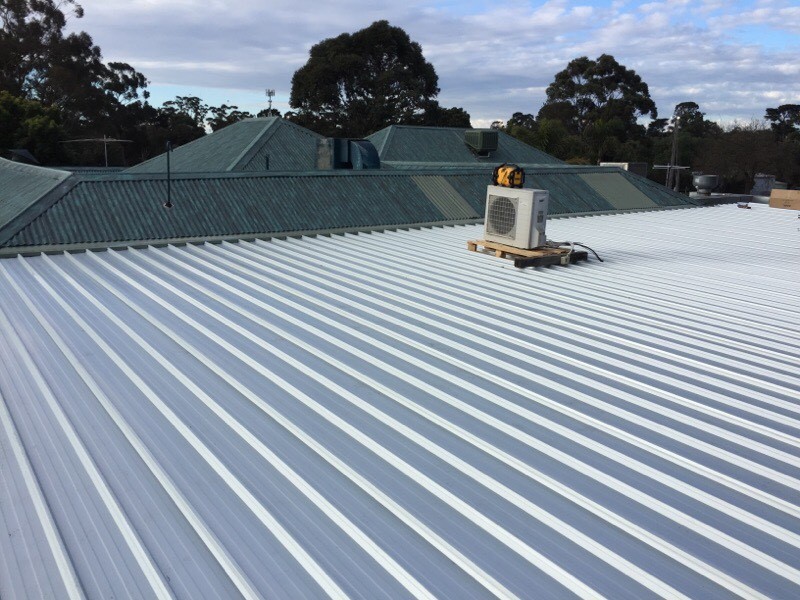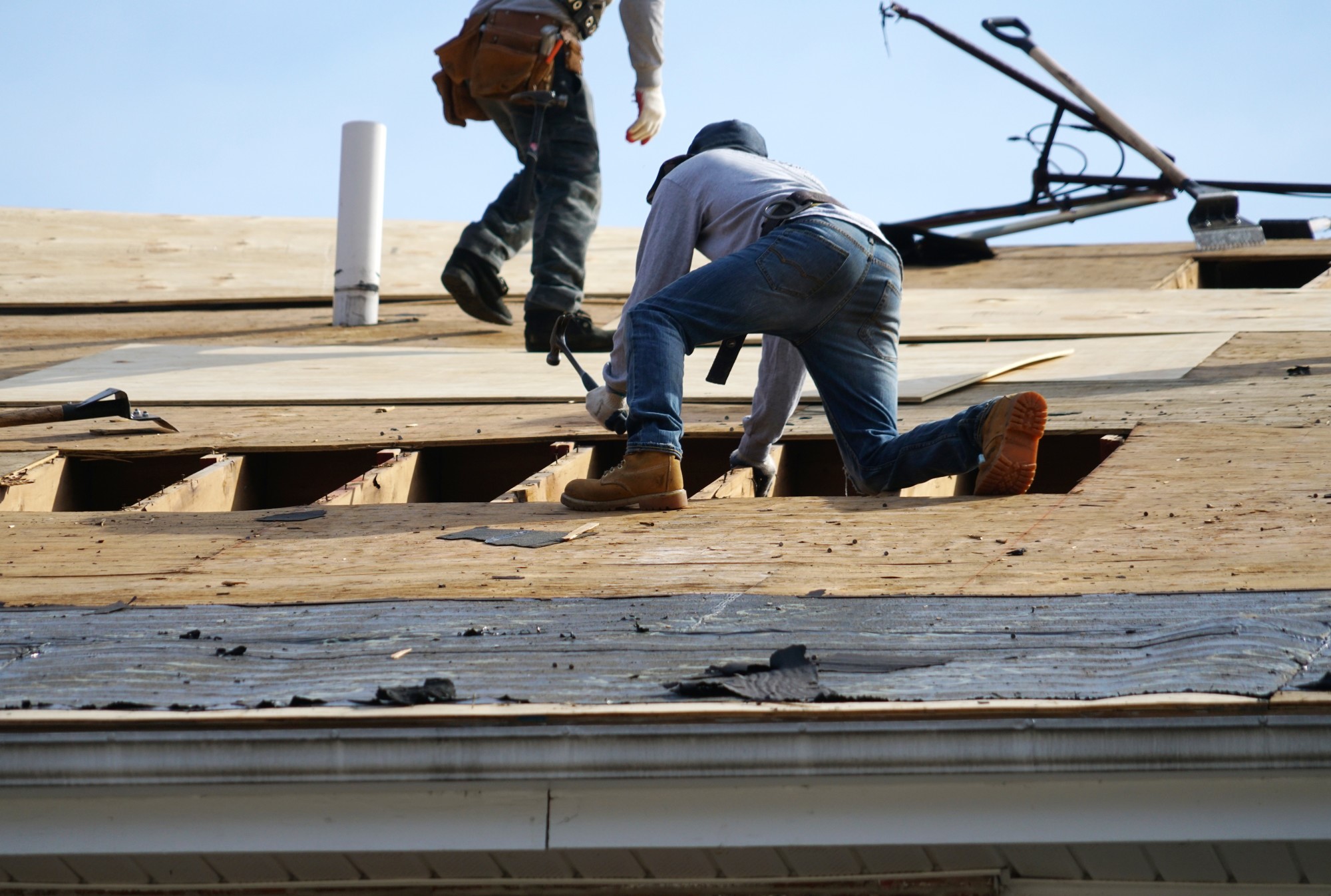roofing Louisville, Kentucky
ROOFING REPAIR
Repairing a roof can be daunting! But it's (important) to remember that taking the time to do it correctly is worth it. Neglecting a roof repair can cause serious damage, not only to the roof itself but also to any objects or living things underneath. It's critical to find an experienced professional who can handle the job. They'll know how to inspect for any potential problems and make sure they're fixed promptly. Furthermore, they'll have all the right tools and materials necessary for the repair.
However, (it's just as important) to choose materials that are suited for your particular type of roof and climate conditions. For example, if you live in an area with heavy rain or snowfall, then you must choose materials that will stand up well under those conditions. Additionally, certain repairs may require specialized techniques or equipment that an ordinary person might not possess.
Finally, there are safety measures to consider when repairing a roof; these include wearing proper clothing and protective gear such as goggles and gloves while working at height! Working on a steeply pitched surface requires extra caution as well; slipping or falling could lead to serious injury or even death! Therefore, it’s wise to take every precaution before starting work on a roofing repair project.(Moreover,) It’s also essential for individuals attempting this project themselves – instead of hiring a contractor –to do their research thoroughly beforehand so they understand what steps need to be taken prior beginning repairs.
In conclusion, although roofing repair can often seem overwhelming due its complexity and risks involved; with careful planning and preparation, anyone can successfully complete this task! Just ensure you use proper materials for the job while keeping safety in mind at all times!!
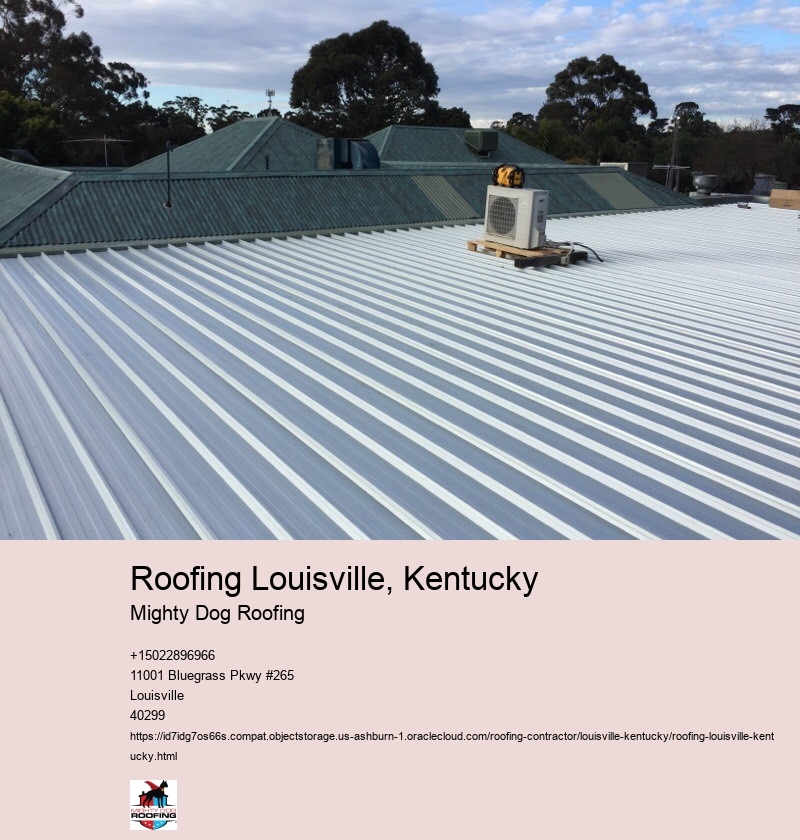
ROOFING REPAIR NEAR ME
Roofing repair is an important task that needs to be addressed quickly! If you're looking for a reliable company near you, (it) can be difficult to know where to start. However, there are several things you should consider when searching for roofing repair services; cost, quality of materials and customer service.
First off, the cost of the job should ne'er be your only deciding factor. Look into any available discounts from the contractor or manufacturer too. It's also worth researching the reputation of each potential provider - bad reviews will often point out issues with timing or quality of workmanship. Additionally, make sure that they use high-quality materials as this could save money in the long run by extending the life of your roof.
Moreover, customer service is equally important when it comes to roofing repairs. You'll want someone who understands your concerns and listens carefully to your requests. Before making a decision on who to hire, ask them about their experience and qualifications in the field - this will give you peace of mind knowing that they have solid knowledge of best practices when it comes to repairing roofs safely and effectively.
Finally, don't forget about safety! When evaluating each provider's work methods and policies; look for evidence that they take safety seriously. This includes using protective gear such as hard hats and safety glasses while working on a rooftop as well as having proper fall protection systems in place if needed.
Overall, finding someone local for roofing repair isn't always easy but doing some research beforehand can help ensure you find a good fit for your particular situation! With these tips in mind, it won't take long before you've found a reliable contractor near you who provides excellent service at an affordable price!
- https://id7idg7os66s.compat.objectstorage.us-ashburn-1.oraclecloud.com/roofing-contractor/louisville-kentucky/roofing-louisville-kentucky.html
- https://id7idg7os66s.compat.objectstorage.us-ashburn-1.oraclecloud.com/roofing-contractor/louisville-kentucky/privacy-policy.html
- https://id7idg7os66s.compat.objectstorage.us-ashburn-1.oraclecloud.com/roofing-contractor/louisville-kentucky/sitemap.html
- https://id7idg7os66s.compat.objectstorage.us-ashburn-1.oraclecloud.com/roofing-contractor/louisville-kentucky/sitemap.xml
- https://id7idg7os66s.compat.objectstorage.us-ashburn-1.oraclecloud.com/roofing-contractor/louisville-kentucky/about-us.html
- https://id7idg7os66s.compat.objectstorage.us-ashburn-1.oraclecloud.com/roofing-contractor/louisville-kentucky/feed.xml
EMERGENCY ROOFING REPAIR
Emergency roofing repair is a critical task that can't be neglected (especially) when storms cause damages. It's essential to take action immidiately, as the consequences of ignoring it could lead to disastrous outcomes! Negligence or delay in repairing a roof can have long-lasting effects on the structure and integrity of your home. However, it's important to remember that emergency roofing repairs aren't something you can take lightly. The process requires expert attention and skill, so it's best to contact a local roofer who has experience with this type of work.
In addition to calling a professional for help, there are also some steps homeowners can take themselves (when safe). First, inspect the area around your home for any loose or damaged shingles or tiles. If you find any, use duct tape or other adhesives to secure them back onto the surface until an expert arrives. Secondly, check for any visible leaks in the attic and ceilings; these should be addressed straight away with tarps and plastic sheeting if possible. Lastly, clear away debris from nearby gutters and downspouts which may cause further damage if left unchecked.
To conclude: emergency roofing repairs are generally quite complex and time-consuming tasks that shouldn't be taken on without proper knowledge and experience – enlisting help from professionals is key! Furthermore, taking precautionary measures yourself when safe will ensure your property remains protected until skilled assistance arrives.

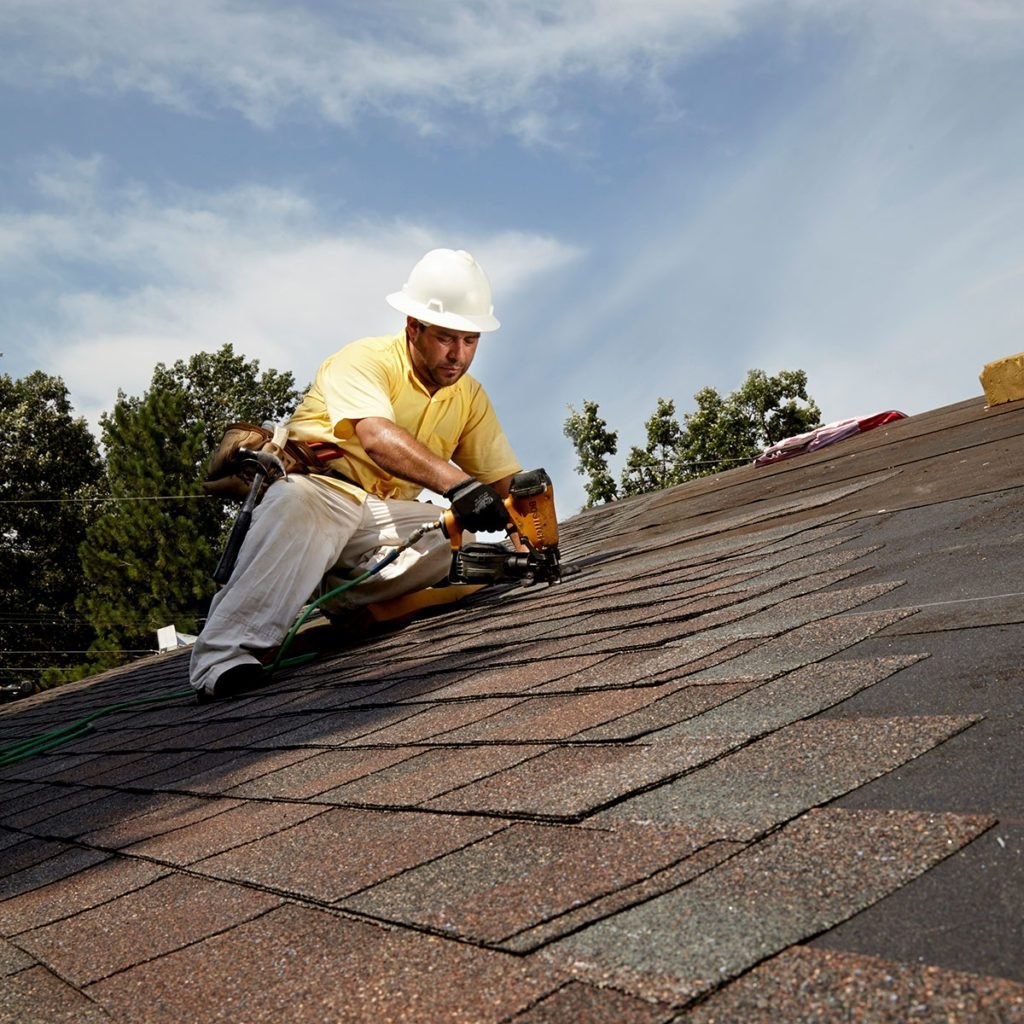
MOBILE HOME ROOFING REPAIR
A mobile home's roofing repair is a daunting task (that) requires a lot of hard work and dedication. It is important to not take it lightly and be prepared for any surprises. Even if you have the best tools, there may still be unexpected problems! The first step in repairing a mobile home roof is to inspect the area thoroughly. This will help identify what type of damage has been done and what needs to be fixed. After that, one should make sure that all materials are gathered and ready to go before starting any repairs.
The next step towards successful mobile home roofing repair is to clean off debris from the area such as twigs, leaves, or dirt particles which could clog up the drains or even cause more damage. A dry cloth can also be used to dust off the surface and remove excess moisture in order to prevent further corrosion or mold growth. Furthermore, it’s essential (to) assess whether a patch job would suffice instead of replacing the entire roof. If so, then one must use high-quality sealants along with strong adhesives for an optimal result.
However, if replacing large sections of the roof is required then special attention should be given while removing old shingles as they can contain asbestos fibers which if inhaled can cause serious health issues over time. Double check everything after installation since faulty installation can lead to costly disasters down the line! Also remember that proper maintenance after repair is key for a long-lasting outcome; cleaning out gutters regularly for instance can save you from having major issues later on.(And,) finally never attempt this without professional assistance as improper handling could cost you even more money in the end!
COMMERCIAL ROOFING REPAIR
Commercial roofing repair is a difficult job, and one which requires an experienced hand. But it doesn't have to be expensive! In fact, there are many cost-effective solutions to fixing your commercial roof. By taking the time to understand your options, you can save yourself money and get (the) professional results you need.
Firstly, regular maintenance is key when it comes to keeping your roof in good shape. Regular inspections will help identify potentional issues so they can be addressed before becoming costly repairs. It's important to know what type of material your roof is made out of too; different materials require different kinds of attention and care. Moreover, paying attention to things like drainage systems and ventilation areas is also essential for preveneting future damages from occuring.
Additionally, if you do find yourself needing a repair on your commercial roof - don't fret! There are several methods that can be used depending on the situation at hand: patching up small holes or cracks using sealant; replacing worn-out shingles with new ones; even re-covering entire sections if needed! Again, it all depends on how serious the damage is and what materials were used in construction originally.
Ultimately, commercial roofing repair may not seem like something exciting - but having a well-maintained, functional roof can protect you from more expenisve issues down the line! Don't take this task lightly: invest in regular inspections and maintenace services today so you won't have any regrets tomorrow! And remember: an ounce of prevention is worth a pound of cure...so take action now!
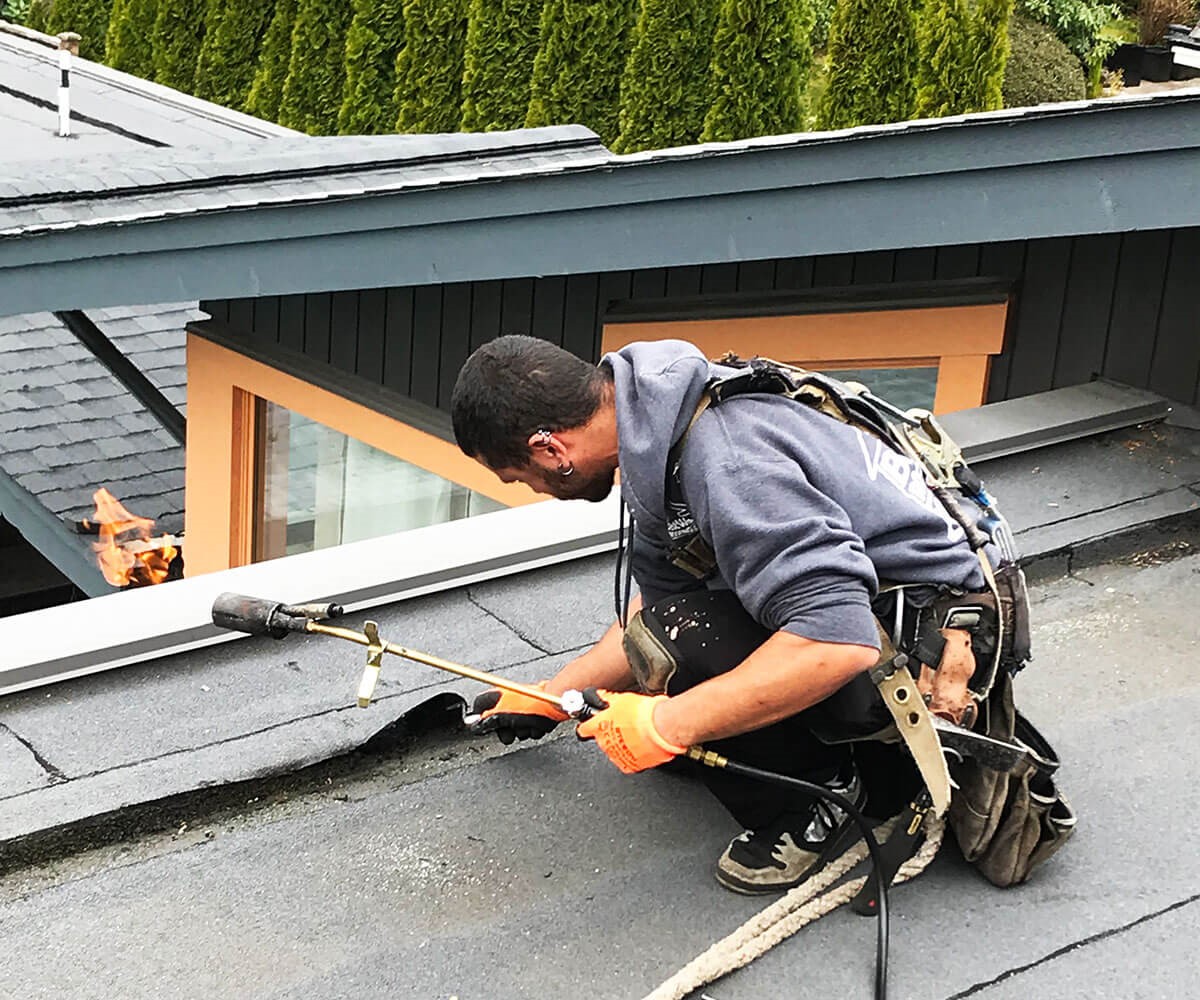
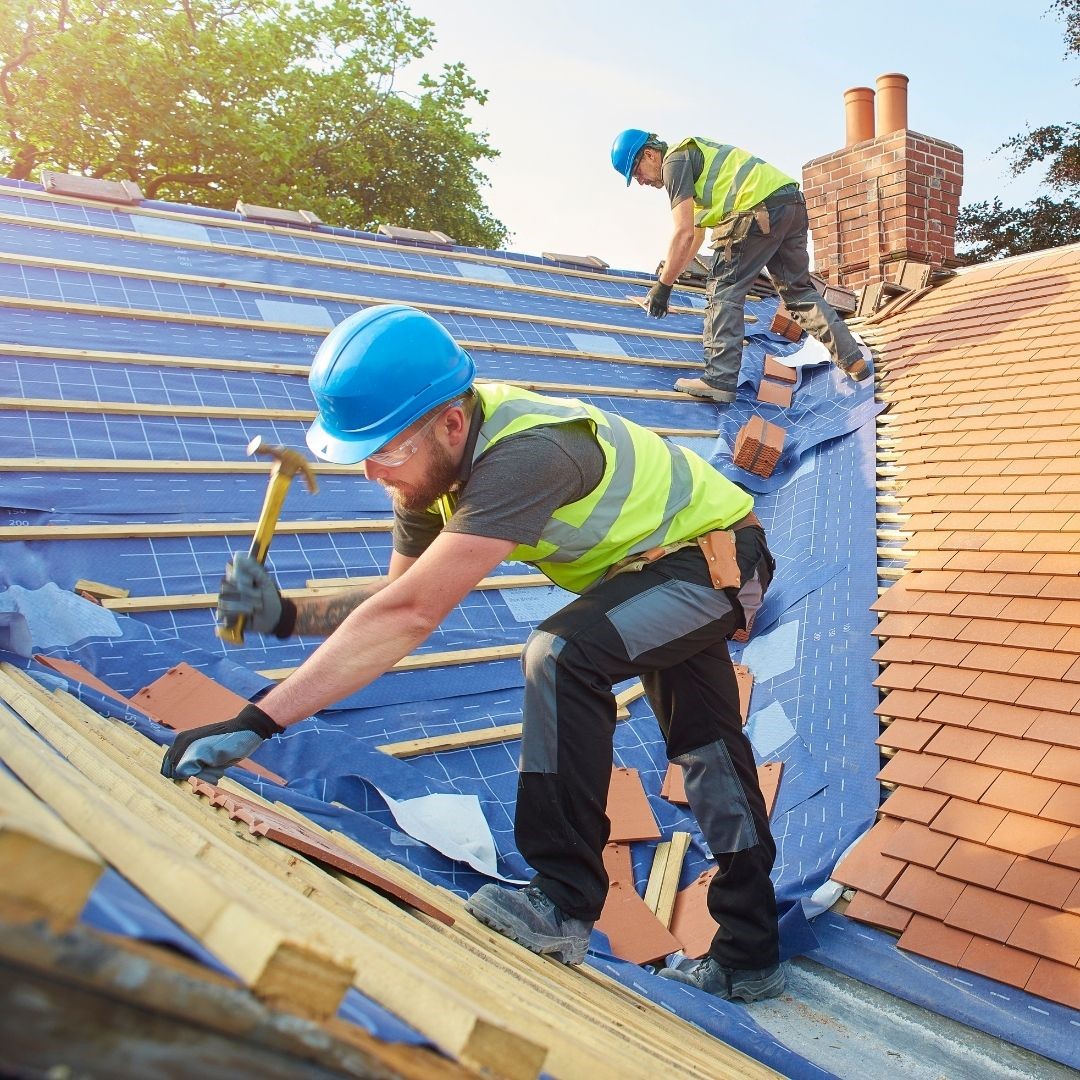
ROOF INSPECTION
A roof inspection (is) an important part of maintaining a home. It should be done regularly in order to safeguard against any potential damage. During this process, an inspector will look for signs of wear and tear, as well as any structural concerns that may arise. The inspector will also check the insulation and ventilation of the attic space to ensure proper air flow throughout the house.
However, it's not always necessary to hire a professional for this job; there are ways to inspect your own roof from the ground level. For example, you can examine the shingles for any cracking or curling, and inspect the gutters for clogs or leaks. You should also pay attention if there is debris on top of your roof or around its edges - such items could be indicative of a problem!
Moreover, take note if there is excessive moss growth on your rooftop, as this can create dampness and lead to rot over time. If possible, try to spot any rusting or corrosion on metal components like flashing or vents too. Finally, have a look around at neighbouring properties with similar structures - this might help you identify anything unusual about yours!
In conclusion, roof inspections are essential for ensuring that your home remains in good condition and safe from potential hazards. Thoroughly inspecting it yourself can save money but make sure you know what you're looking out for! Otherwise transition into getting someone who knows what they're doing – after all prevention is better than cure!
ROOFING REPAIR COMPANY
A roofing repair company can be a lifesaver! When your roof has a problem, it's essential to have a reliable (and honest!) business you can turn to for help. Luckily, there are many businesses that specialize in roof repairs and replacements. But how do you choose the right one? After all, not all companies offer the same services or quality of work. Here are 3 tips for finding the perfect roofing repair company for you:
First, look for experienced professionals who have been in the industry for several years. Ask questions about their qualifications and certifications so you know they're qualified to handle your project. Also make sure they use high-grade materials and supplies so that your repair lasts longer. Avoid any companies who seem shady or unprofessional; these are usually signs of poor workmanship!
Second, get references from family and friends who have used a specific company before. This will give you an idea of what kind of service they provide and whether or not their prices are affordable. Additionally, don't be afraid to ask lots of questions about their process; this way, you'll know exactly what to expect when it comes time for the actual repair work.
Finally, read online reviews from past customers before making your decision. While some reviews may be biased or exaggerated, most reputable companies will have plenty of satisfied customers praising their services - which is always reassuring! Furthermore, if possible try visiting their website or physical shop location so you can get an even better feel for them before committing to anything.
In conclusion, choosing the right roofing repair company takes time but is well worth it in the end! Do your research carefully and take into account all factors like experience level and customer feedback before making your ultimate decision - then relax knowing you found true professionals who will get the job done properly(!)

Louisville | |
|---|---|
| Louisville/Jefferson County Metro Government | |
|
| |
| Nickname(s): | |
Location within Kentucky Show map of KentuckyLocation within the United States Show map of the United StatesLocation within North America Show map of North America | |
| Coordinates: 38°15′22″N 85°45′05″W / 38.25611°N 85.75139°W / 38.25611; -85.75139 | |
| Country | United States |
| State | Kentucky |
| County | Jefferson |
| Founded by | George Rogers Clark |
| Named for | Louis XVI |
| Government | |
| • Type | Mayor–council |
| • Mayor | Craig Greenberg (D) |
| • Metro Council | 26 council members |
| Area | |
| • Consolidated city-county | 341.44 sq mi (884.32 km2) |
| • Land | 324.94 sq mi (841.59 km2) |
| • Water | 16.50 sq mi (42.73 km2) |
| Elevation | 466 ft (142 m) |
| Population (2020) | |
| • Consolidated city-county | 633,045 |
| • Estimate (2022)[5] | 624,444 |
| • Rank | 27th in the United States[a] 1st in Kentucky |
| • Density | 1,900/sq mi (720/km2) |
| • Urban | 1,025,000 (US: 46th) |
| • Urban density | 2,430.8/sq mi (938.5/km2) |
| • Metro | 1,395,634 (US: 43rd) |
| Demonym | Louisvillian[7] |
| Time zone | UTC-5 (EST) |
| • Summer (DST) | UTC-4 (EDT) |
| ZIP code prefixes | major: 402xx minor: 400xx, 401xx |
| Area code | 502 |
| FIPS code | 21-48000 |
| FIPS code | 21-48006 |
| GNIS feature ID | 0509453[8] |
| Website | louisvilleky |
The Louisville-Jefferson County, KY-IN Metropolitan Statistical Area (MSA) includes Louisville-Jefferson County and 12 surrounding counties, seven in Kentucky and five in Southern Indiana. As of 2019, the MSA had a population of 1,395,634,[19] the 43rd largest in the nation.[b]
Since 2003, Louisville's borders have been the same as those of Jefferson County, after a city-county merger.[14] The official name of this consolidated city-county government is the Louisville/Jefferson County Metro Government,[15] abbreviated to Louisville Metro.[16] Despite the merger and renaming, the term "Jefferson County" continues to be used in some contexts in reference to Louisville Metro, particularly including the incorporated cities outside the "balance" which make up Louisville proper. The city's total consolidated population as of the 2020 census was 782,969.[17] However, the balance total of 633,045[18] excludes other incorporated places and semiautonomous towns within the county and is the population listed in most sources and national rankings.
Today, the city is known as the home of boxer Muhammad Ali, the Kentucky Derby, Kentucky Fried Chicken, the University of Louisville and its Cardinals, Louisville Slugger baseball bats, and three of Kentucky's six Fortune 500 companies: Humana, Kindred Healthcare, and Yum! Brands.[12][13] Muhammad Ali International Airport, Louisville's main commercial airport, hosts UPS's worldwide hub.
Named after King Louis XVI of France, Louisville was founded in 1778 by George Rogers Clark, making it one of the oldest cities west of the Appalachians.[11] With nearby Falls of the Ohio as the only major obstruction to river traffic between the upper Ohio River and the Gulf of Mexico, the settlement first grew as a portage site. It was the founding city of the Louisville and Nashville Railroad, which grew into a 6,000-mile (9,700 km) system across 13 states.
Louisville (/ˈluːivɪl/ (![]() listen) LOO-ee-vil, US: /ˈluːəvəl/ (
listen) LOO-ee-vil, US: /ˈluːəvəl/ (![]() listen) LOO-ə-vəl, locally /ˈlʊvəl/ (
listen) LOO-ə-vəl, locally /ˈlʊvəl/ (![]() listen) LUUV-əl) is the largest city in the Commonwealth of Kentucky, sixth-most populous city in the Southeast, and the 28th-most-populous city in the United States.[a][10] Louisville is the historical seat and, since 2003, the nominal seat of Jefferson County, on the Indiana border.
listen) LUUV-əl) is the largest city in the Commonwealth of Kentucky, sixth-most populous city in the Southeast, and the 28th-most-populous city in the United States.[a][10] Louisville is the historical seat and, since 2003, the nominal seat of Jefferson County, on the Indiana border.
About Louisville, Kentucky
The history of Louisville spans hundreds of years, and has been influenced by the area's geography and location at the head of the Falls of the Ohio River. The rapids at the Falls of the Ohio created a barrier to river travel, as a result, settlements grew up at this stopping point. The first European settlement in the vicinity of modern-day Louisville was on Corn Island in 1778 by Col. George Rogers Clark, credited as the founder of Louisville. Several landmarks in the community are named after him. Two years later, in 1780, the Virginia General Assembly approved the town charter of Louisville. The city was named in honor of King Louis XVI of France, whose soldiers were then aiding Americans in the Revolutionary War. Early residents lived in forts to protect themselves from raids from the local indigenous population, but moved out by the late 1780s. In 1803, explorers Meriwether Lewis and William Clark organized their expedition across America in the town of Clarksville, Indiana at the present-day Falls of the Ohio opposite Louisville, Kentucky. The city's early growth was influenced by the fact that river boats had to be unloaded and moved downriver before reaching the falls. By 1828, the population had grown to 7,000 and Louisville became an incorporated city. Early Louisville was a major shipping port and enslaved African Americans worked in a variety of associated trades. The city was often a point of escape for fugitive slaves to the north, as Indiana was a free state.[citation needed] During this point in the 1850s, the city was growing and vibrant, but that also came with negativity. It was the center of planning, supplies, recruiting, and transportation for numerous campaigns, especially in the Western Theater. Ethnic tensions rose, and on August 6, 1855, known as "Bloody Monday", Protestant mobs attacked German and Irish Catholic neighborhoods on election day, resulting in 22 deaths and widespread property damage. Then by 1861, the civil war had broken out. During the Civil War, Louisville was a major stronghold of Union forces, which kept Kentucky firmly in the Union. By the end of the war, the city of Louisville itself had not been attacked, although skirmishes and battles, including the battles of Perryville and Corydon, took place nearby. After Reconstruction, returning Confederate veterans largely took political control of the city, leading to the jibe that Louisville joined the Confederacy after the war was over.[citation needed] The first Kentucky Derby was held on May 17, 1875, at the Louisville Jockey Club track (later renamed Churchill Downs). The Derby was originally shepherded by Meriwether Lewis Clark, Jr., the grandson of William Clark of the Lewis and Clark Expedition, and grandnephew of the city's founder George Rogers Clark. Horse racing had a strong tradition in Kentucky, whose Inner Bluegrass Region had been a center of breeding high-quality livestock throughout the 19th century. Ten thousand spectators watched the first Derby, which Aristides won. On March 27, 1890, the city was devastated and its downtown nearly destroyed when what scientists now estimate was an F4 tornado tore through as part of the middle Mississippi Valley tornado outbreak. It is estimated that between 74 and 120 people were killed and 200 were injured. The damage cost the city $2.5 million (equivalent to $69 million in 2019). Established in 1896, Neighborhood House Louisville was the first settlement movement house in the state. The moniker "Gateway to the South" comes from the large number of African Americans that moved to Louisville during the period of the Great Migration in the beginning of the 20th century. Settling in an area of the city known as Needmore in 1870, it would later be known under the moniker of Little Africa as migration intensified, reaching its height in the 1920s. After urban renewal programs demolished many of the existing neighborhood structures in the 1950s, it came to be known today as the Park DuValle neighborhood. In 1914, the City of Louisville passed a racially-based residential zoning code, following Baltimore, Atlanta, and a handful of cities in the Carolinas. The NAACP challenged the ordinance in two cases. Two weeks after the ordinance enacted, an African-American named Arthur Harris moved into a house on a block designated for whites. He was prosecuted and found guilty. The second case was planned to create a test case. William Warley, the president of the local chapter of the NAACP, tendered a purchase offer on a white block from Charles Buchanan, a white real estate agent. Warley also wrote a letter declaring his intention to build a house on that lot and reside there. With the understanding that the Louisville ordinance made it illegal for him to live there, Warley withheld payment, setting in motion a breach of contract suit by Buchanan. By 1917 the US Supreme Court agreed to hear the case of Buchanan v. Warley. The court struck down the Louisville residential segregation ordinance, ruling that it violated the Fourteenth Amendment's due process clause. In 1917, shortly after the United States' entry into World War I, Louisville was selected as the site of Camp Zachary Taylor. Camp Taylor was one of the country's largest World War I training camps. It was home of the 84th Infantry Division and trained over 150,000 men by the end of war, including F. Scott Fitzgerald. The camp was closed in 1921. Many of the buildings and infrastructure in the Camp Taylor neighborhood of Louisville are there as a result of the training camp. In 1929, Louisville completed the lock and dam in the Falls of the Ohio and the city began referring to itself as "where Northern enterprise and Southern hospitality meet". Between the industrial boom of that year and through the Great Depression, Louisville gained 15,000 new residents, about three percent of them black(450), most fleeing poverty in rural areas. Throughout January 1937, 19.17 inches (48.7 cm) of rain fell in Louisville, and by January 27, the Ohio River crested at a record 57.15 feet (17.42 m), almost 30 feet (9.1 m) above flood stage. These events triggered the "Great Flood of 1937", which lasted into early February. The flood submerged 60–70 percent of the city, caused complete loss of power for four days, and forced the evacuation of 175,000 or 230,000 residents, depending on sources. Ninety people died as a result of the flood. It led to dramatic changes in where residents lived. Today, the city is protected by numerous flood walls. After the flood, the areas of high elevation in the eastern part of the city had decades of residential growth. Louisville was a center for factory war production during World War II. In May 1942, the U.S. government assigned the Curtiss-Wright Aircraft Company, a war plant located at Louisville's air field, for wartime aircraft production. The factory produced the C-46 Commando cargo plane, among other aircraft. In 1946, the factory was sold to International Harvester, which began large-scale production of tractors and agricultural equipment. In 1950, the Census Bureau reported Louisville's population as 84.3% white and 15.6% black. Throughout the 1940s, there were more black police officers than any other Southern city, though they were allowed to patrol only black districts. This, in part, made Louisville seem like a more racially progressive city than other Southern cities, although only when black citizens accepted a lower status than white citizens. Many historians have referred to this "veil" of segregation as a "polite" racism. Historian George Wright stated that polite racism "often deluded both blacks and well-meaning whites into believing that real progress was being made in their city". For example, in the city Jim Crow practices were not maintained by law so much as by custom. Similar to many other older American cities, Louisville began to experience a movement of people and businesses to the suburbs in the 1960s and 1970s. Middle class residents used newly built freeways and interstate highways to commute to work, moving into more distant but newer housing. Because of tax laws, businesses found it cheaper to build new rather than renovate older buildings. Economic changes included a decline in local manufacturing. The West End and older areas of the South End, in particular, began to decline economically as many local factories closed. In 1974, a major (F4) tornado hit Louisville as part of the 1974 Super Outbreak of tornadoes that struck 13 states. It covered 21 miles (34 km) and destroyed several hundred homes in the Louisville area, causing two deaths. Since the 1980s, many of the city's urban neighborhoods have been revitalized into areas popular with young professionals and college students. The greatest change has occurred along the Bardstown Road/Baxter Avenue and Frankfort Avenue corridors as well as the Old Louisville neighborhood. In recent years, such change has also occurred in the East Market District (NuLu). Since the late 1990s, Downtown has experienced significant residential, tourist and retail growth, including the addition of major sports complexes KFC Yum! Center, Lynn Family Stadium and Louisville Slugger Field, conversion of waterfront industrial sites into Waterfront Park, openings of varied museums (see Museums, galleries and interpretive centers below), and the refurbishing of the former Galleria into the bustling entertainment complex Fourth Street Live!, which opened in 2004. On March 13, 2020, four plainclothed officers from Louisville Metro Police Department executed a “no-knock” search warrant which led to the killing of Breonna Taylor, a 26-year-old African-American woman. For months afterward, Taylor’s family, members of the local community, and people around the world protested to demand that officers involved in the shooting be fired and criminally charged. These protests and demonstrations coincided and intertwined with the international George Floyd protests, as well as the Black Lives Matter movement and a broader movement of racial unrest. As a result of the incident, the police chief was fired and four officers received federal charges, but no significant systemic changes were made. On April 10, 2023, a mass shooting occurred at the Old National Bank, killing five people, and injuring nine others. The suspect, who was a bank employee and who officials said was livestreaming the rampage, was killed by the police after exchanging fire with them.
Things To Do in Louisville, Kentucky
Driving Directions in Louisville, Kentucky to Mighty Dog Roofing
Driving Directions From Deer Park Roofing, LLC to Mighty Dog Roofing
Driving Directions From SkyGuard Home to Mighty Dog Roofing
Driving Directions From Eclipse Roofing & Restoration, LLC to Mighty Dog Roofing
Driving Directions From Roof It Right to Mighty Dog Roofing
Driving Directions From AIC Roofing & Construction Inc to Mighty Dog Roofing
Driving Directions From We Nailed It Roofing & Gutters to Mighty Dog Roofing
Driving Directions From Erie Home to Mighty Dog Roofing
Driving Directions From Storm Guard Roofing and Construction to Mighty Dog Roofing
Driving Directions From Big League Roofers to Mighty Dog Roofing
Driving Directions From Pro4mance Roofing & Exteriors, LLC to Mighty Dog Roofing
Driving Directions From Keller Roofing and Siding to Mighty Dog Roofing
Driving Directions From United Contracting LLC to Mighty Dog Roofing
Driving Directions From BHC Roofing and Siding to Mighty Dog Roofing
Driving Directions From Legacy Contracting to Mighty Dog Roofing
Driving Directions From Middletown Roofing & Windows Company to Mighty Dog Roofing
Driving Directions From Bradford Roofing & Home Improvement to Mighty Dog Roofing
Driving Directions From New Level Construction, S Corp to Mighty Dog Roofing
Driving Directions From Classic Metal Roofing Systems of Kentuckiana to Mighty Dog Roofing
Reviews for Mighty Dog Roofing
Paul M.
Great business! Quickly came out and gave me an estimate, matched missing shingles and had the repair completed before the next rain. Highly recommend!
Deborah Betts
The rep Brian Swan was so professional. The crew that put roof on , cleaned up after themselves. They even did the job sooner than I expected. Certainly would refer others to Mighty Dog Roofing.
Mike Barr
They went way above my expectations. They are very professional and are timely. In short they do what they say they are going to and do it well
Kenneth White
Would highly recommend Mike was very knowledgeable courtesy.
What type of roofing material is best for Louisville, Kentucky?
The best type of roofing material for Louisville, Kentucky is metal roofing due to its durability and resistance to weather.
What are the average costs associated with roofing in Louisville, Kentucky?
The average cost of roofing in Louisville, Kentucky can range from $3-$7 per square foot depending on the type and quality of materials used.
Are there any special permits or regulations required for roofers in Louisville, Kentucky?
Yes, all roofers in Louisville, Kentucky must register with the state and obtain proper licensing before they can begin work. Additionally, a permit may be required depending on the scope of the project.
Is there a professional organization that provides information about local roofers in Louisville, Kentucky?
Yes, the Roofers Union Local #44 offers resources and services for local professional contractors who specialize in residential and commercial projects throughout Louisville, Kentucky.
